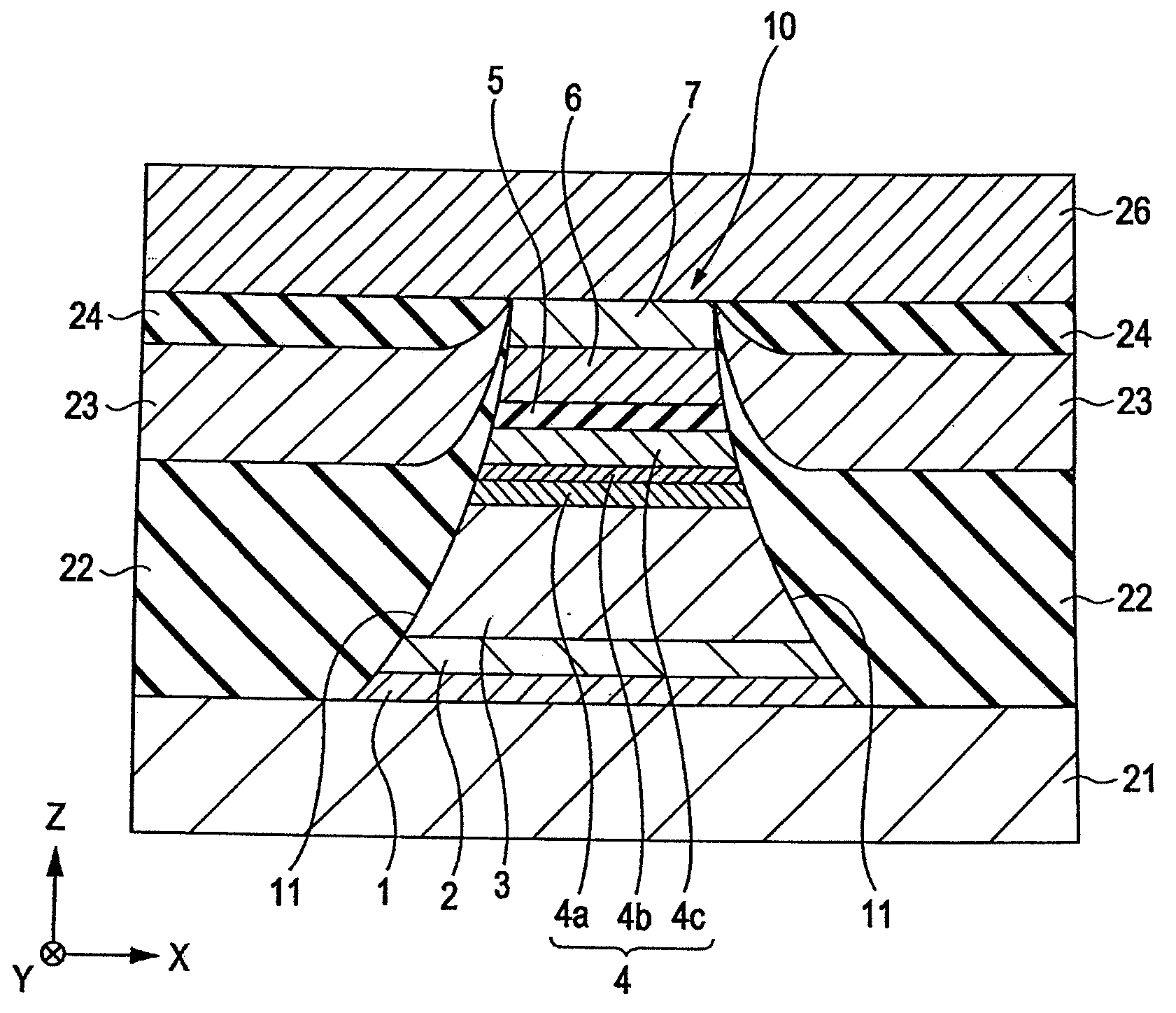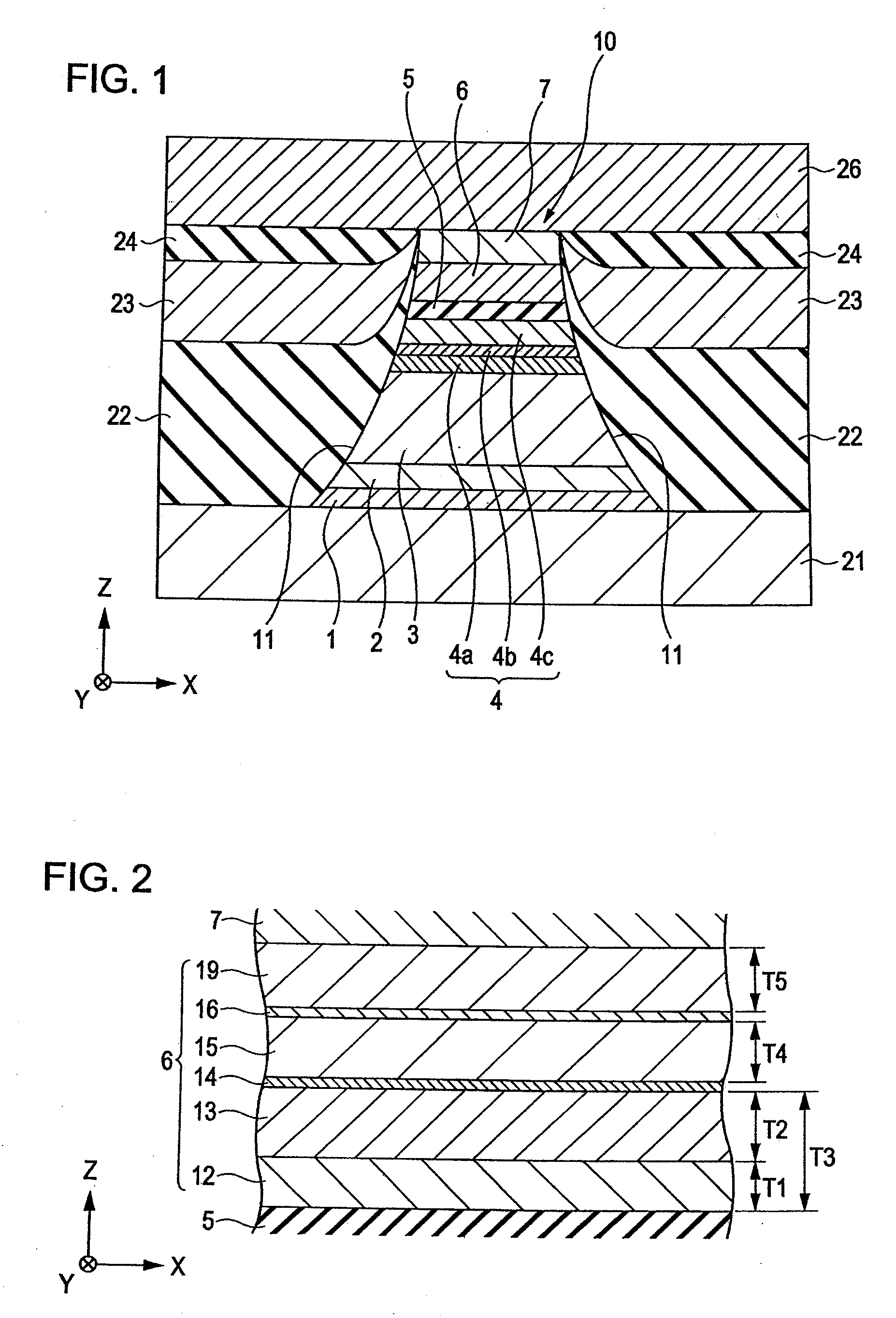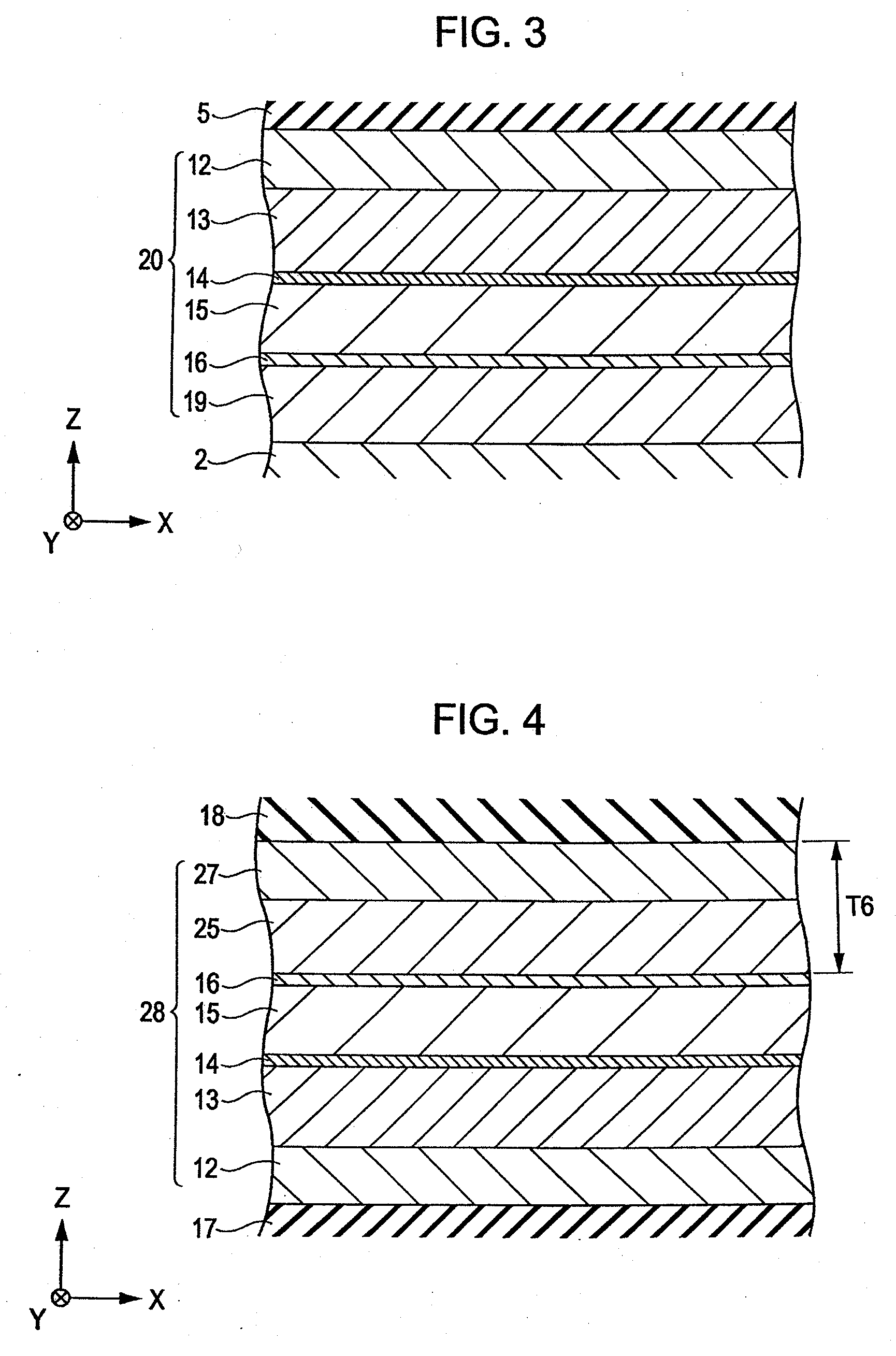Tunneling magnetic sensing element having free magnetic layer inserted with nonmagnetic metal layers
a magnetic sensing element and free magnetic layer technology, applied in the field of magnetic sensing elements, can solve the problem of easy cause of barkhausen noise, and achieve the effect of increasing the rate of change resistance (r/r), and effectively increasing the rate of change resistan
- Summary
- Abstract
- Description
- Claims
- Application Information
AI Technical Summary
Benefits of technology
Problems solved by technology
Method used
Image
Examples
example 1
[0088]A tunneling magnetic sensing element including a laminate having a free magnetic layer 6 in which nonmagnetic metal layers 14 and 16 were inserted between a first soft magnetic layer 13 and a second soft magnetic layer 15 and between the second soft magnetic layer 15 and a third soft magnetic layer 19, respectively, as shown in FIG. 2, was fabricated.
[0089]The laminate was formed by depositing, from the bottom, underlying layer 1; Ta(30) / seed layer 2; Ni49at %Fe12at %Cr39at %(50) / antiferromagnetic layer 3; Ir26at %Mn74at %(70) / pinned magnetic layer 4 [first pinned magnetic sublayer 4a; Fe30at %Co70at % (16) / nonmagnetic intermediate sublayer 4b; Ru(8.5) / second pinned magnetic sublayer 4c; Co90at %Fe10at %(18)] / insulating barrier layer 5 / free magnetic layer 6 [enhancement layer 12; Fe90at %Co10at %(10) / first soft magnetic layer 13; Ni88at %Fe12at %(20) / first nonmagnetic metal layer 14; Ta(2.5) / second soft magnetic layer 15; Ni88at %Fe12at %(20) / second nonmagnetic metal layer 16;...
example 2
[0100]A tunneling magnetic sensing element including a laminate having a free magnetic layer 6 in which nonmagnetic metal layers 14 and 16 were inserted between a first soft magnetic layer 13 and a second soft magnetic layer 15 and between the second soft magnetic layer 15 and a third soft magnetic layer 19, respectively, as shown in FIG. 2, was fabricated.
[0101]The laminate was formed by depositing, from the bottom, underlying layer 1; Ta(30) / seed layer 2; Ni49at %Fe12at %Cr39at %(50) / antiferromagnetic layer 3; Ir26at %Mn74at %(70) / pinned magnetic layer 4 [first pinned magnetic sublayer 4a; Fe30at %Co70at %(16) / nonmagnetic intermediate sublayer 4b; Ru(8.5) / second pinned magnetic sublayer 4c; Co90at %Fe10at %(18)] / insulating barrier layer 5 / free magnetic layer 6 [enhancement layer 12; Fe90at %Co10at %(10) / first soft magnetic layer 13; Ni88at %Fe12at %(Y) / first nonmagnetic metal layer 14; Ta(2.5) / second soft magnetic layer 15; Ni88at %Fe12at %(20) / second nonmagnetic metal layer 16; T...
PUM
 Login to View More
Login to View More Abstract
Description
Claims
Application Information
 Login to View More
Login to View More - R&D
- Intellectual Property
- Life Sciences
- Materials
- Tech Scout
- Unparalleled Data Quality
- Higher Quality Content
- 60% Fewer Hallucinations
Browse by: Latest US Patents, China's latest patents, Technical Efficacy Thesaurus, Application Domain, Technology Topic, Popular Technical Reports.
© 2025 PatSnap. All rights reserved.Legal|Privacy policy|Modern Slavery Act Transparency Statement|Sitemap|About US| Contact US: help@patsnap.com



